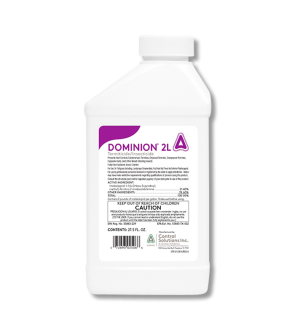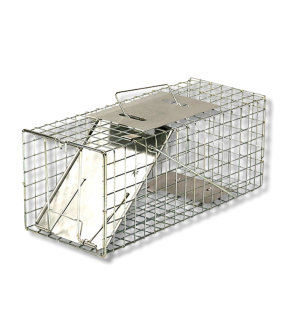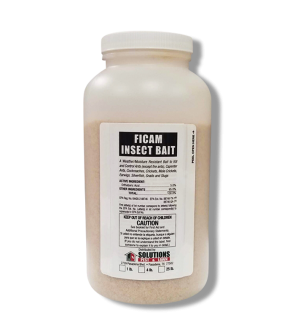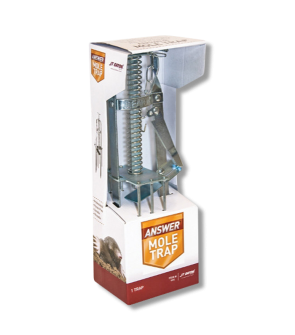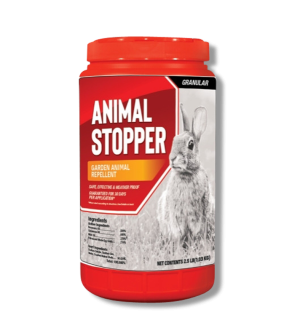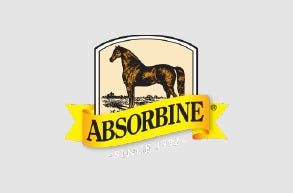Gain access to personalized product screening, the best pricing, rewards, and more!
Common Garden Pests
Most Effective Products
Common Garden Pests: How to Prevent Garden Pests
This page is general DIY control guide for moles, aphids, rabbits, slugs, snails, Japanese beetles, and caterpillars invading your garden and lawn. Follow this guide and the attached links to learn more about these garden pests and how to effectively control them through our recommended steps and professional quality products.
Whether you are a new or established gardener, preservation of foliage is something that everyone desires. Those who have tended desired plants understand the labor and care that goes into raising a healthy and established garden or yard. Unfortunately, these beautiful and well-cared for landscapes is an invitation to pests that will chew or gnaw on plants.
Insects and other types of garden pests like rabbits and moles can cause a lot of damage to your garden and lawn without proper control. Some insects and animals only cause damage during the breeding season or to feed their young. However, one thing that is constant is the continual feeding activity of these pests since they have determined your yard as a safe and dependable food source. When this happens, control measures will be necessary.
When facing an insect infestation in your yard or garden, first identify the species to determine which insecticide and treatment plan to follow. There are numerous species of insects that could be inflicting these damages, but the most common ones are aphids, Japanese beetles, and caterpillars. Other garden pests such as snails and slugs, commonly get mixed with this category when in fact they are mollusks.
While one damaged plant may not seem like an issue, the truth is their is a pest that is slowly making itself at home in your property and attracting other members of its species to the area. The basic care implemented at the beginning of pest activity can save your landscape in the long run. Learn to recognize the pest infesting your garden and control or prevent them through the steps and products listed in this DIY guide.
Rabbit
Rabbits may appear cute and harmless, but to a homeowner they are destructive lawn and garden pests. These pests are notorious for eating all types of leafy and woody foliage in yards from vegetables, fruits, grass, to ornamental plants. Rabbits can be easily identified by their long ears and short bushy tails. Depending on the species of rabbit they range from 8 to 20 inches and will vary in colors brown, gray, black, and white.
How to Identify Rabbit Damage in Lawns and Gardens
Rabbits are relatively short pests that will stand on their hind legs to eat at a height of 20 inches on near-ground level plants and shoots. Foliage and shoots eaten by rabbits will have clean angled cut as if it was done by a pair of scissors due to their sharp front teeth. Bark on the base of plant trunks may also be gnawed on by this pest.
In the spring and summer, damages to lawn may be increased as rabbits are creating a nest-like cavity (called form) from grass and weeds. It provides rabbits with a suitable home to have kittens (baby rabbits) during the spring and summer. These nests are hard to identify, but can be found on the surface of lawn and have uprooted grass and thatch surrounding it. Near sites of rabbit activity these pests excrete coarse, round pea size scat.
Mole
Many homeowners have never seen a mole, which is understandable given this pest is specifically found in the ground below your turf. Moles are small rodents that have small eyes, concealed ears, long hairless snouts, and large front paws with claws to help them dig. Despite the damage caused to your foliage these pests are carnivorous feasting on earthworms, grubs, and other insects living in the ground.
How to Identify Mole Damage in Lawns and Gardens
Moles are ravenous eaters that move throughout the soil in your lawn by pushing up soil to the surface to make their tunnels deeper. Entrances to mole tunnels have a oval shape and will be elevated above the surface of your turf.
The network of tunnels below the turf can cause unintentional damage to plant roots leading to wilting, yellow to brownish coloration, and eventual death. Moles tend to burrow near areas shaded by trees and underneath ornamental foliage, because these areas contain cool, moist soil which is ideal to soil-borne insects.
Aphids
Aphids are very small insects with pear-shaped bodies that appear in clusters and feed on the sap of plants. After ingesting the sap they will void it as honeydew, which generates disease growth or as a food attractant to ants. Aphids are not indiscriminate in plants although they do prefer tender, young shoots. Besides their feeding activity, this parasitic pest poses another issue in its ability to reproduce quickly.
How to Identify Aphid Damage in Lawns and Gardens
Due to aphids size and coloration, they can be hard to see on plants. Aphids need to drain the nutrients from plants so foliage leaves will appear discolored, dull, and low hanging. These pests will also produce a sticky, liquid known as honeydew on the leaves and stems of plants.
Slug and Snail
Snails and slugs are similar in appearance with the exception that slugs are shell-less. Both of these pests belong to the mollusk category, which is unusual as snails and slugs can move freely above land and water whereas other mollusk like oysters cannot. However, both of these pests depend on sufficient levels of moisture leading to frequent feeding activity during the night to avoid becoming dried out from the sun.
How to Identify Snail and Slug Damage to Lawns and Gardens
Snails and slugs feed on a variety of living and decaying plant leaves and matter. They will chew irregular holes along the edges and center of leaves leaving behind a trail of silvery mucus. Snails and slugs will also feed on flower petals, fruit, plant bark, and stems, but they mainly prefer seedlings and tender leaved plants like flowers.
Japanese Beetles
Japanese Beetles poses multiple threats from their feeding activity on the top of various plants and trees to their soil-borne larvae feeding on the roots of lawns and other plants in your yard. This pest contains an alluring metallic green coloration with copper colored wing covers and several white spots along the side of the abdomen. Regardless of its appearance, Japanese Beetles can cause significant damages to desired foliage because of tendency to feed in large numbers.
How to Identify Japanese Beetle Damage to Lawns and Gardens
Although 1/3rd of an inch long, Japanese Beetles creates serious damages to various foliage, shrubs, ornamental flowers, turf, and fruits. These damages first begin with the larvae of Japanese Beetles as these pests feast on your grass roots causing brown patches of grass or wilted yellowing turf. Adult Japanese Beetles feed on the surface of the leaves by eating the tissue between the veins leaving a skeletal or lacey appearance.
Caterpillar
Caterpillars are the larvae form of moths and butterflies that feed on the leaves and stems of shrubs, ornamental foliage, and trees. There are many types of caterpillars that can be found in your yard and garden, but we will discuss the tent caterpillar as this is most encountered pest. Tent caterpillars have hairy black bodies with white stripes down the back. As their names suggests, these pests will form white webby masses in the gaps and forks of tree and plant branches.
How to Identify Caterpillar Damage to Lawns and Gardens
In the late spring to early summer, caterpillar pests such as the tent caterpillar feed on the surface of plant leaves and stems. Caterpillars such as the tent caterpillar will leave irregular small holes in leaves within older and newer growth.
How to Get Rid of Garden Pests
Before using any pesticide products, you will need to wear the appropriate personal protective equipment (PPE) that will protect your mouth, eyes, face, hands, feet, and skin.
The next thing to do is to inspect your plant type to determine if the recommended products can be used.
Step 1: Pest Proof with Barriers
Barriers such as fencing or netting can stop garden pests such as rabbits or deer. Depending on the pest visiting your property, you will need to adjust your height and spacing on that pests.
For example, fencing for deer should be done at height of 8 feet or above with spacing no more than 2 inches a part as this pest can jump above this height. Constructing fencing for pests like rabbits should be made with chicken coop wiring at a height of 30 to 36 inches and spacing no more than 1 inch.
Copper mesh material listed for slugs and snails may be used to gently wrap around the base of plants. This will help to keep away these pests as copper creates an chemical reaction similar to an electrical shock.
Step 2: Lay Out Traps with Bait
Remove all competing food sources by securing trash cans and fencing garden areas. Once this has been done, determine the pathways that rabbits and other animal pests are using by inspecting for damages or scat. Place the appropriate sized trap near the sites most frequented by this pest. Solutions Humane Live Trap should be placed in areas with constant shade or not in the direct path of sunlight as a trapped animal can die within a few hours if left too long in the sun.
We recommend using a small Solutions Humane Live Trap for pests such as rabbits. However, for underground pests such as moles you should use Answer Mechanical Mole Trap. Make sure you are wearing protective gloves when placing these easy to traps as most animals depend on their sense of smell. If these pests smell your scent on the trap then they are less likely to visit the trap.
To set the Solutions Humane Live Trap, push down the trap door lock and lift the cage door. Leave the cage door open while pulling the trigger arm forward to set the trap. Carefully place the appropriate bait with strong food odors at the back of the cage behind the trigger plate to encourage animal pest to step further into the trap. Once the pest steps on the trigger plate the front cage door will close.
Baits for moles should not be placed in the Answer Mechanical Mole Trap, but in the tunnel itself. We recommend using Talpirid Mole Bait as this product is designed to look like grubs and worms to lure the mole to ingesting it. Once ingested, the mole will perish within 48 hours.
Step 3: Treat Yard with Repellents or Pesticides
Repellents and pesticides are an effective and sometimes natural control over animals and insects in gardens and yards. Depending on the product, chemicals or natural ingredients may be used to keep your yard full of healthy plants and eliminate or deter pests. If you are an organic gardener who is concerned with the amount of chemicals being applied to your plants then we recommend using a botanical insecticide to eliminate insect pests.
To treat aphids and Japanese Beetles, you will want to use Dominion 2L as this product can eliminate grubs residing in your turf. Use Supreme IT for various caterpillar species such as the tent caterpillar and other listed insects within your lawn and plants used for aesthetic purposes or climatic purposes in interior plantscapes, ornamental gardens or parks, or lawns and grounds. As the only mollusk pests, snails and slugs will need to be treated with Ficam Insect Bait. Repellents are recommended for animals as these types of products rely on natural ingredients to deter pests away without harm. For example, rabbits will use Animal Stopper Granule Repellent.
Refer to the linked pest page or product label for specific application rates. To mix liquid products such as Dominion 2L and Supreme IT, you will need to use a backpack sprayer, handheld pump sprayer, or hose-end sprayer. Fill your backpack or handheld pump sprayer halfway with the required amount of water, add the measured amount of product, then pour in the remaining half of water. Close the lid to the sprayer tank and agitate until solution is well-mixed. Spray the top and bottom of plant leaves until wet, but not to the point of run-off.
To mix in hose-end sprayers, fill the appropriate amount of product into the hose container and attach to the end of a garden hose. Do not add water to this product as you will spray until the appropriate amount of water is mixed with the solution.
To apply repellent products such as Animal Stopper Granular Repellent you may apply directly from the container or pour into a hand spreader. Fill the measured amount of product into the top of the spreader and stand near the edge of the afflicted area. Apply near the perimeter of the area, but not directly onto the plant.
Step 4: Rotate Plants Every Season
Rotating plants and gardens entails moving the location of certain plants from one area to another each year. By doing this you help to maintain soil fertility and deter past pests and fungal activity. Many pests such as Japanese Beetles overwinter in the soil and when these grubs emerge they dine on the plants near them. Not moving plants around will also help animals to revisit past feeding spots and encourage other members of its species to invade your property.
Make notes of past areas where insect and animals have previously visited and write down the dates. Depending on the plant, dig a hole that will provide enough space for the roots to expand and not be crushed against the side of the holes walls. Wetten the soil around the plant you desire to move to easily dig out the plant. With a shovel or trough, carefully dig several inches from the plants drip line to avoid damaging the plants roots. Place the plant into the new hole and cover with soil.
Key Takeaways
What is the Most Common Garden Pests
- Moles, aphids, rabbits, slugs, snails, Japanese Beetles, and caterpillars are common pests that will chew on plants in your garden, lawn, and yard.
What Attracts Insects and Animals to Your Garden?
- Insects and animals are attracted to the plants, shrubs, and trees in your garden due to the amount of moisture, nutrients, and taste the foliage provides. Soil around these areas also provide ideal living conditions for soil-borne insects such as grubs.
How to Identify Pests in Gardens
- Look for the physical presence of the insect or animal afflicting your foliage. If you cannot witness these pests then examine the damage on the plant or signs of scat for animals. You may also determine the type of plants the pest is feeding on as some insects and animals eat certain types of foliage.


















